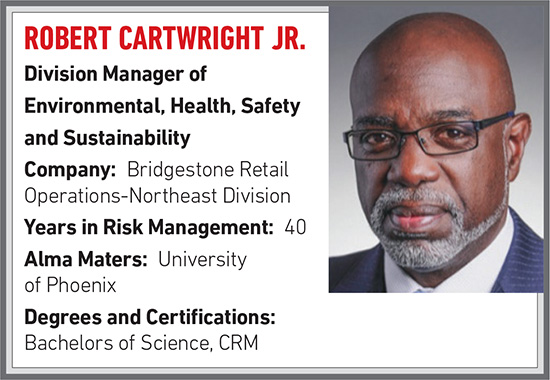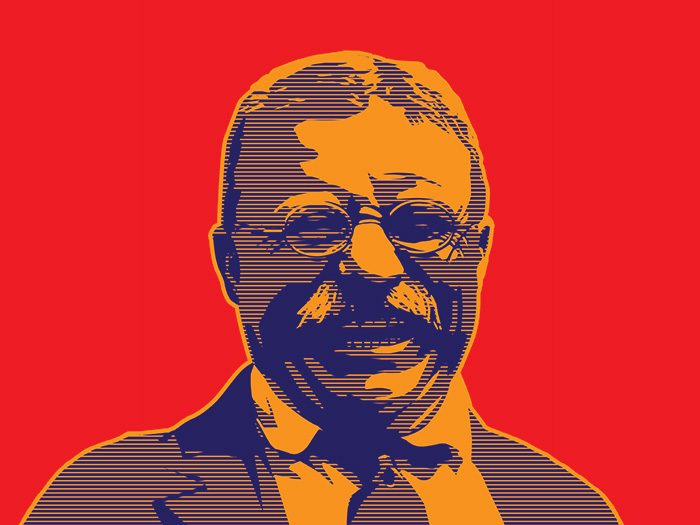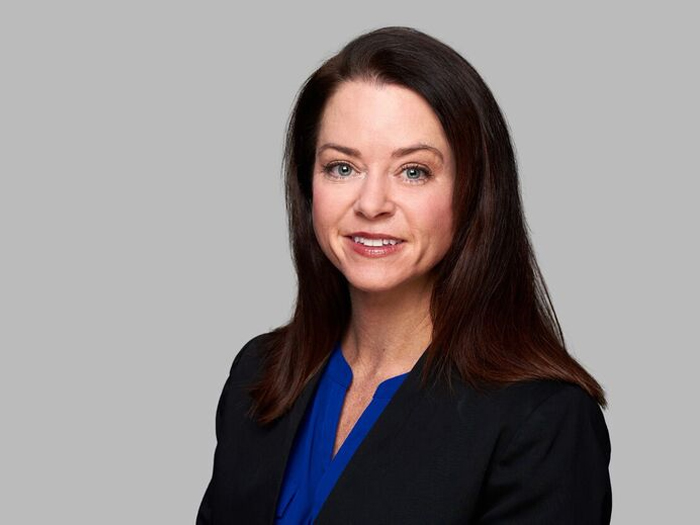For This Risk Manager, a Diverse Risk Management and Insurance Workforce Could Be the Key to the Talent Crisis

R&I: What was your first job?
My first job ever was a janitor in a sheet metal company. I got an interest in the machines once they told me I had to finish one job before I started another, so I became fascinated with all the press shears, and power brakes, and welding.
Long story short, in 16 years, I actually became the plant manager when they moved to a larger location. So, I moved up through the ranks and eventually became the plant manager.
R&I: How did you come to work in risk management?
The transition really went from plant operations. From plant operations, I went into HR. When I was dealing with HR, I dealt with OSHA, workers’ comp, and then from there moved into loss prevention, safety, and currently, with environmental health, safety and sustainability.
Risk management, historically, was always about insurance and the folks who are buying the insurance. It shifted in the ’70s to analyzing not just the cost of what the insurance was but also mitigating the risk, managing the risk and assessing the risk. Then having a better understanding of what it is.
Technically, when you look at a risk manager today, they don’t primarily stay in the field of insurance. They’re in multiple fields, whether it be IT, whether it be legal, HR, safety — there’s so many elements of it. The company as an enterprise is looking at how the team is managing that entire risk. Therefore, we’re no longer looking and saying, ‘Well, we have a $5 million retention. And so therefore we’re insured up to that point.’ We’re looking to say, ‘Well, we’re insured up to that point. What are we going to do to reduce that risk down to maybe $2.5 million and maybe have a three to five year plan and reduce it down below a million?’ That’s the level of what risk management is today.
R&I: What’s been the biggest change in risk management and the insurance industry since you’ve been in it?
We have folks who are now in what they call the C-suite, chief risk officers. Risk is being identified as a prominent part of a business’ strategic development plan. And so now it’s become a part of the DNA of most organizations. Companies utilize that terminology and try to find folks who are versed in it so that these folks can help the company reduce exposure and increase profits.
I would say that the biggest change in the risk management and insurance industry now is that it can now be viewed as a profit generator, because now we find ways of how to reduce the risk, which reduces the exposure, which reduces the expense overall, therefore increasing the bottom line.
R&I: What’s the biggest challenge you’ve faced in your career?
When I started to get into management — and there’s not many minorities in management and there weren’t many minorities in management when I moved into that direction in the ’70s — so being the first and only was part and parcel of what I endured and what I encountered through most of my career. I think the biggest challenge has been looking at that situation and saying, ‘How are you as an individual going to be different and/or better in your position?’
I’ll never forget the president of the one company I worked for, a refrigeration company. I took over its HR operations, and then he gave me plant operations. He said, ‘You’re going to be our first Black HR person.’ I said, ‘No, I’m going to be your best HR and plant operations person.’
I said, ‘The fact that I’m Black doesn’t mean anything.’ So, it was always overcoming those types of obstacles and/or being faced with the fact that, ‘Well, maybe you’re not as qualified or maybe you’re not being given opportunities because of how you look.’ I think those were some of the biggest obstacles I faced in my career.
R&I: How can the risk management and insurance industries better approach diversity and inclusion?
There has been a lot of information that’s come out about the financial benefits of having a diverse workforce. RIMS put out a Talent 2025 study that surveyed about a thousand industry partners and folks from the C-Suite and executive positions asking them specifically about what talent is going to look like in the next five years. A diverse workforce was always something that everyone’s talked about, but the industry is struggling trying to get to that point.
I think the whole idea is that when we look at the hiring and retention policies of any risk management or insurance industry, how do they get to that point? Maybe they’re starting mentoring at a college level. It would be a great idea to say that we’re now going to specifically target and be intentional about hiring so that it fits our customer demographics.
A lot of times what happens is a company is doing well and they’re doing well within the confines of the scope of what they’ve been dealing with or who they’ve been dealing with, but there’s a bigger world out there, and we’re all globally connected. Right now, the talent for our IT solutions are coming from outside of the United States and not within, while yet there are people who are here in this country who want to learn more about it, and we’re not taking that time to teach them or to mentor them.
The second thing I would say is that when we talk about diversity and inclusion, sometimes the mistake would be that when we think about who we’re going to hire, we make sure that we have certain mandates or certain quotas that puts us in line with the compliance standpoint — and all those things are great. But just because you may have a woman on your board or on your staff, or minority on your staff, it doesn’t mean that you’re being diverse, nor does it mean that you’re being inclusive if they’re not part of the overall strategic conversation of the organization. A lot of times, it’s just a matter of saying, ‘You know what? If we’re going to be intentional in our hiring, we’re also going to be intentional in our mentoring and sponsoring.
A lot of times that the person comes into a company, they happen to know someone because they know someone, now they get onto a fast track and that allows them to be mentored, to be a successor further down the line. That just happens on an unconscious level. But I think on a conscious level, if the risk management in the insurance industries approach this better, it has to be more intentional. We’re not just talking about filling quotas, we’re not talking about putting minorities in just for the sake of, qualified people are qualified people, but you have to find those qualified people and they’re out there. There are many of them out there.
I just posted something on LinkedIn yesterday about an organization called Inroads. They have that talent pipeline right from college. They groom these kids right from high school before they go on to college so that when they graduate college, they’re ready to plug and play into the industry. I think if we can do a better job of doing that and being conscious in our hiring decisions and reach out to folks to find out where to get diverse talent, because they’re connecting the dots, and I’m a big person about connecting the dots. It’s very easily done. We just have to have that kind of a conversation.
R&I: Who has been your mentor(s) and why?
I’d say over the years, it’s probably been three folks who have really influenced me. The first one was Bill Horton. He was the foreman and I was a mechanic at the time. His personality and how he handled situations — especially one of our workers who was very anti-safety and very antagonistic about policies and procedures — I’m speaking about myself, by the way — was admirable.
He coached me through a lot of different things, but his approach was very singular. And he would say, ‘This is for your safety. I can’t explain to your family if you got in an accident and you lose an eye, I can’t explain that. But you’re going to have to be responsible.’ And then he showed me data. ‘Here, your name is on the first aid log. Your name is listed here more than anyone else’s. This is how much is costing the company. But when you miss time, this is how much it’s costing you.’
That was a turning point in my career. I became very safety conscious. But as a leader, he showed me that you can lead, and you don’t have to be the iron fist, and you don’t have to be the taskmaster and saying, ‘I’m the foreman or I’m the voice and you have to do it my way.’ He was very collaborative and just explained the why to me. I think that was the biggest thing. He explained the why.
The second person would be Terry Fleming. I crossed his path early on in my career with RIMS. He was also a former RIMS president. We were at a function, and he said, ‘Well, I’m going to buy you a drink.’ Now the drinks were free. So, I was like, ‘Okay, so buy me a free drink.’ But I said, ‘What was the issue?’ He said, ‘Well, I want to know what your plan is.’ I said, ‘What’s my plan? What do you mean, what’s my plan?’ He said, ‘Your plan. Why are you here at RIMS? What’s your plan?’ I said, ‘Well, I finish this drink, then I may get another one. I may get something to eat. I don’t know.’ He said, ‘No. What is your long-term plan? You’re doing great things on a chapter level, and you’re involved with the legislative efforts, you’re doing things with other committees. What is your plan here at RIMS?’
I didn’t really have a plan. I never even thought about a plan. But that got me thinking about things on a much broader scale of the impact of being involved with the local chapter or the impact of being involved with the committees and how that could shape the future and it could shape future generations.
As I mentioned before, connecting the dots with the younger generation, or even connecting with those who have been experiencing and those who have been out there for a long time, and just making that whole connection is so important. So Terry was very influential for me in figuring out, ‘What’s my plan?’ I had never really thought about it on that level.
I didn’t plan to be president, but I did plan to be influential. I did plan to do the best that I could in everything that I did. And so, I was honored and humbled to be selected in 2018 as the president of the RIMS global organization.
My third one is my brother-in-law, David Teagle, but he’s more like a brother to me. He always grounds me when I talk about things, and he’s like, ‘Okay, so explain it to me, what it is that you are talking about,’ when it comes to the current climate of what’s going on and people talking about racism. He said something to me the other day, and I wrote it down, because I just thought it was so profound. He said, ‘What can be taught can be fixed. And that unity comes from breaking down walls, not building them.’
He served in Germany. He was there when they knocked down the wall separating East and West Germany. Now you have a unified Germany. The idea is that we build up walls around things and that could be within a department or silos. For example, HR only does HR things. Legal does legal things. Operations does operations things.
Nobody breaches those walls. You have unity when you break down those walls. When you’re talking about things that are taught, people are taught to hate something or to dislike something. It’s something that’s constantly taught.
R&I: What is the risk management community doing right?
The risk management community has evolved and gotten away from being satisfied with having caps to protect. So now we’re asking questions such as, ‘Have we done everything that we needed to do?’ A friend of mine in India talked about the unknown unknowns. I thought it was a very unique term to use, but he mentioned the fact that risk management, if you really want to get into it, it challenges the unknowns.
We can be satisfied in saying, ‘Hey, we’ve had a five-year trend of decline of cases, and it’s actually increased our profits, but what about the unknowns?’ And if you think about it, who would have thought when we changed the calendar on January 1 of 2020 that nine months later we would still be dealing with a global pandemic that is affecting our lives in such unique ways and that is still impacting us and we’re still trying to understand how to deal with it on a day-to-day basis? There’s an unknown there.
I think, and in the midst of this pandemic adjusting to COVID-19, because the risk management community is a very tight-knit community, there’s conferences and there’s networking opportunities. All those things came to a grinding halt in March of this year.
It changed the focus of how we do things. RIMS has done a fantastic job with that by way of outreach programs to try to keep people connected, and to try to keep them informed, and to try to provide the resources for the risk management community, because like it or not, all of us as risk managers are the ones that our companies are coming to and saying, ‘What should we do? How should we handle this?’
It’s great that RIMS as a resource has been able to provide that going forward. We didn’t have a conference in Denver this year. And we said, ‘No conference, no problem. We’ll still connect you. We’ll still find a way to connect with you.’ The chapters have done a phenomenal job of connecting by creating their own webinars to handle their community. Or in a couple of cases, we had from Dallas, Chicago, and L.A., those chapters combined and had a series of webinars dealing with topics and information that was very, very topical for the industry.
R&I: What could the risk management community be doing a better job of?
The training and the mentoring of the next generation. There’s going to be, and industry statistics are out there, 450,000 jobs that will be sun-setted. And perhaps a lot of them are sun-setted now due to COVID-19, but there’s a lot of folks who have a wealth of experience who will be leaving the industry. That gap has to be filled. When we did the Talent 2025 Survey, that was something that most business leaders are looking for. They want to have that level of involvement and they need to have that level of connection.
We need to do a better job of what we call knowledge transfer. So take the technology that exists today, and then set up with the tradition of risk management and putting those two together so that now we’re in the 21st century, we’re looking at risk from a totally different perspective. We can’t keep doing things the same way.
We have to innovate. We have to move forward. We have a generation of folks who know nothing but innovation, because that’s how they were raised. Let’s put those two things together. Let’s create that knowledge transfer and bring in that next generation of folks and teach them the tradition that existed.
I was at a seminar, these young people were talking about using the KISS method, and most industry people would know that acronym would stand for, ‘Keep It Simple, Stupid.’ But the whole idea is that they use the acronym and said, ‘We’re going to use that same acronym and we’re going to look at keeping the things that are working, improving the things that are not, stopping the things that are not allowing the industry to move forward and to start moving forward from a technology standpoint.’
R&I: How would you say technology has impacted the risk management profession?
Everything has become more and more automated. Using blockchain, for example, creates the opportunity to have documents done in such a secure fashion that you don’t have to worry about faxing, and signing, and sending things back and forth. In that way, it just creates a whole plethora of opportunities.
FinTech — that is moving forward at a very, very fast rate. Insurtech the same way. Financial technology and insurance technology, those are things that have now changed the landscape of what the industry looks like. As we move more and more towards artificial intelligence helping us to become better, quicker, faster with what we do, all those things are going to change the risk management profession, especially the person who will come into an organization and has those skills ingrained, because now that creates your opportunity to speed things up.
My generation was used to having volumes of documents. Somebody to read volumes of documents. Someone to process that, having lengthy conversations about it. Whereas now, we can have something that’s tailored to an organization, and we have that level of artificial intelligence that allows us to scan through those things a whole lot faster.
R&I: What’s your favorite book or movie?
My favorite book, I read this a few years ago, was called Capitol Men by Philip Dray. It dealt with the reconstruction of the South and the first Black Congressman. I was shocked to know that right after the Civil War, there were 16 Congressmen that were elected from the South to be part of the Congress. I had no idea about that. The fact that they were not only very influential, but very successful, created another concern for folks who wanted to keep things the way they were.
It was just a very systematic way to see how racism started in the United States, and then the Jim Crow laws and the new Jim Crow laws that came into place following. But the fact was that these people did exist. They were part of history. They were part of Congress and helped to change the laws and legislation on equal distribution of land, and the voting rights, and suppressing the ideas of the terrorist groups that were out there.
I’ve read so many books. The Power of a Positive Team is another one that I’ve been reading lately, just to make sure that my focus is on, how we lead overall. Those are just things that stay in my mind and it shapes my thought process.
R&I: What is your favorite drink?
Favorite drink is bourbon. I was introduced to that probably about seven or eight years ago. I had no idea about it. Having the opportunity to travel internationally, I got to find that bourbon is called bourbon because it’s made in Kentucky. The same way champagne is made in Champagne, France, and everything else is called sparkling wine. Everything else outside of Kentucky is called whiskey.
R&I: What have you accomplished that you are proudest of?
I would have to say that my term as RIMS president in 2018 was monumental for a couple of reasons, not just being the first Black president, but I researched the history of the organization and had a better understanding of what I should be doing as a leader.
It was more than a unification, because there was some disconnect with our chapters around the world. There were a lot of invitations for me to attend different conferences around the country and around the world, and going to those places and actually talking to these folks, I had on three different occasions, someone come up to me and say, ‘We heard your general assembly speech in San Antonio in April and you convinced us that this is an organization that we should continue to be connected with RIMS and that we should be involved.’
This kept happening because I asked the audience, ‘What was your plan?’ during that conference in San Antonio. The same way that question was asked to me by my mentor. I challenged the audience, ‘What’s your plan? Why are you still involved with this organization? What are you doing? You volunteer your time and effort, why? What’s your plan?’
That resonated with a lot of members. I’m still hearing that from folks. I was very proud to be able to do that on a global level and just to see how simple and yet how complex communication can be, because communication is more listening than speaking.
I listened to a lot of different thoughts and ideas. And we worked that back into the organization, starting with our D&I initiative. We created a brand-new council in 2019 after having a task force in 2018. Now that’s become part of the DNA of what RIMS is doing as an organization. I felt very proud that it had started under my watch. I would say that would be it.
R&I: What is the riskiest activity you’ve ever engaged in?
My kids will be the first one to say, ‘Well, we used to watch Daddy put up the ceiling fan and take a bet on how many times he would get shocked because he thought that he knew where the power line was.’
That’s about the riskiest thing I’ve been engaged in thus far, but I have a trip planned to Antarctica. I think that will probably be the riskiest thing I would have done or will do in the very near future. Because as I’m going, there’s a potential that I could be trapped in the ice. &










